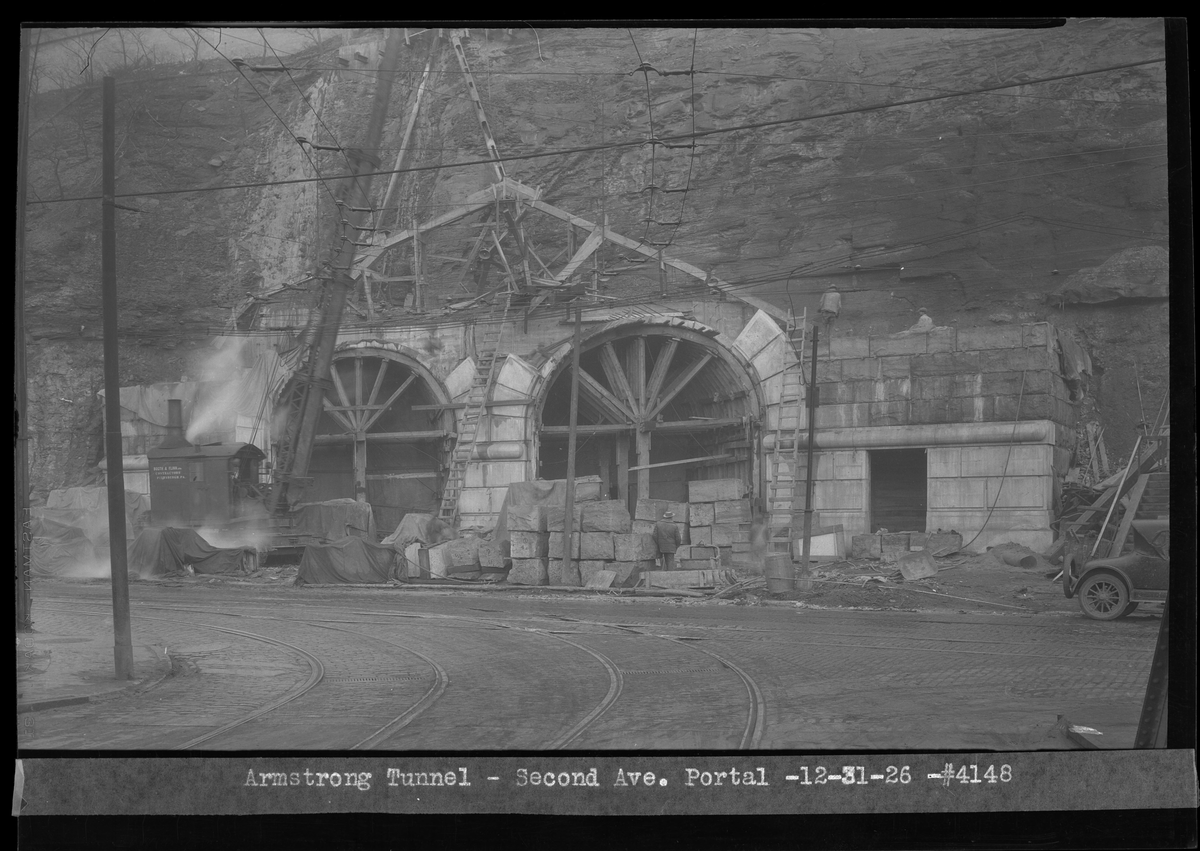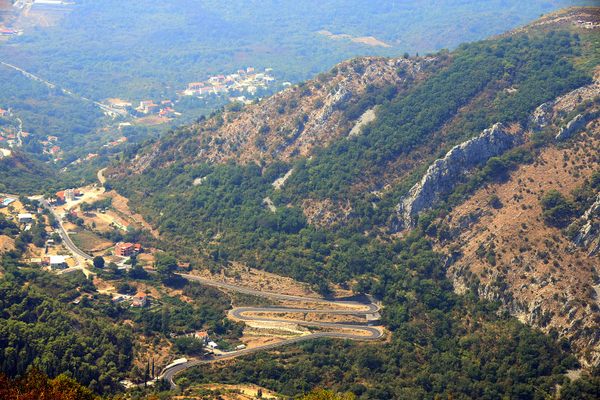About
Running underneath the Bluff in Pittsburgh, Pennsylvania, there is a twin-bore tunnel with an unusual feature: a 45-degree bend near the northern portal.
Built between 1926 and 1927, the Armstrong Tunnel was named after Joseph Armstrong, former County Director of Public Works, Commissioner, and Mayor of Pittsburgh. It was designed with a bend halfway through it to line up at a 90-degree angle with streets that run parallel, but are positioned diagonally.
There are many local stories to explain the tunnel's bend—some say that it's the result of a mistake made by one of the project engineers, while others say that it was to bypass mines, or avoid property lines from nearby Duquesne University. When local news outlet WESA investigated the question in 2018, they found that the bend is included in all the original design drawings. According to Mike Burdelsky, assistant manager of bridge engineering for Allegheny County, the bend was included to help align the structure with existing streets. Armstrong Tunnel was designed to line up at a 90-degree-angle with the cross streets on either end, making it easier to cross the intersection or turn into the tunnel.
When Armstrong Tunnel was built, over 200 acres above it were host to houses, warehouses, brickyards, a dairy, orphanage, a small hospital, and Duquesne University. On the southern end where the tunnel meets the 10th Street Bridge, there used to be a large industrial area, houses, multiple railroad tracks, the Pittsburgh Gas Works, and a brewery. There was also the Fort Pitt incline, which ran from Second Avenue to Bluff Street. The incline and most of the buildings, save for Duquesne University, are gone. The path of the incline is now steep public steps leading to Duquesne University’s campus.
Pghbridges.com reports that since the air draft flows toward the river, bicyclists are able to travel through the tunnel in that direction "with little or no effort."
Related Tags
Published
November 19, 2021































